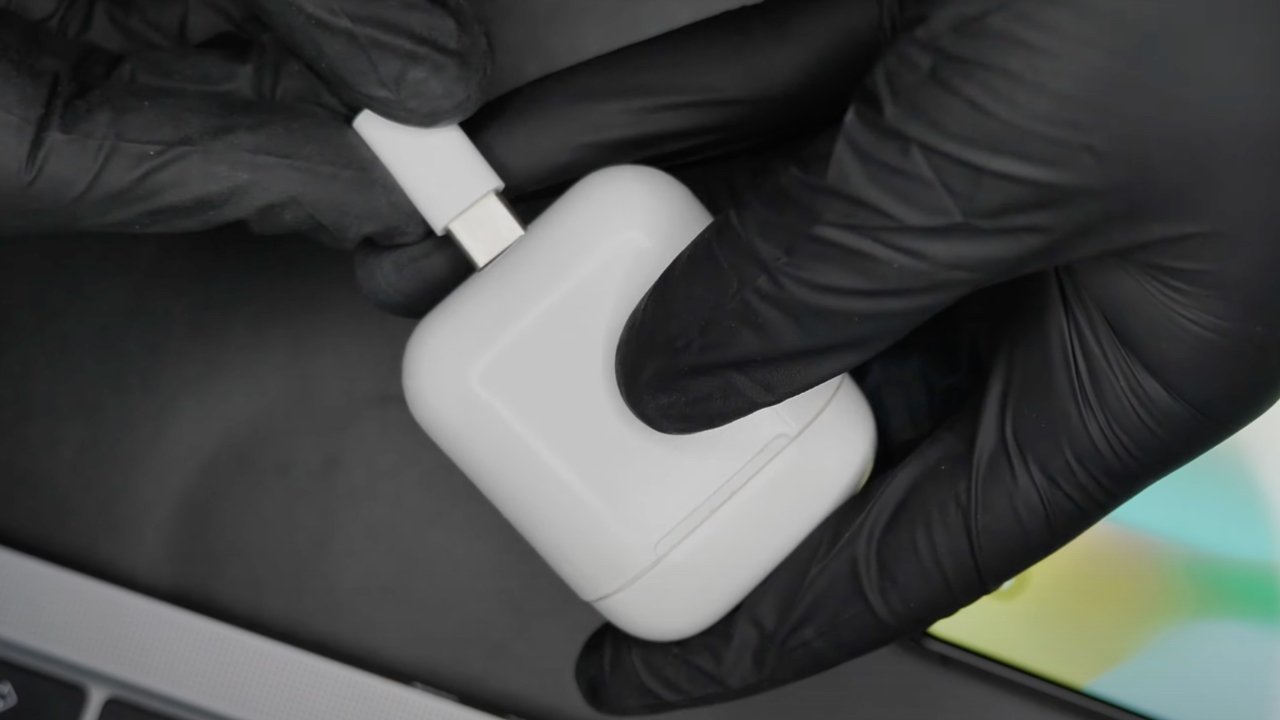AirPods given USB-C & more repairable design by engineer
The engineer who placed a USB-C port in a custom AirPods charging case has provided an in-depth video for his methodology and explains how others can try it at home.

USB-C in a custom AirPods case. Image source: Ken Pillonel
YouTuber and engineer Ken Pillonel isn't happy about Apple's port situation, so he's been finding ways to rectify it himself. After putting USB-C in an iPhone, he built an AirPods charging case with USB-C using a combination of custom components and Apple's own internals.
The in-depth video explains the trial and error of making his own AirPods case, down to getting the quality of the plastic closer to Apple's. Then, he breaks down how he built his own custom USB-C connector to replace the Lightning connector.
Rather than auction off the final product, Pillonel has decided to make his designs public. Anyone can visit his custom website titled "AirPods' Dirty Secret" for details and links to 3D CAD files and more.
By making the project open source, he hopes to help enterprising AirPods users convert their old cases and reduce e-waste. Beyond his issue with the Lightning port, he's also upset that Apple doesn't repair AirPods cases but instead replaces them.
Apple prides itself as a company concerned with bettering the environment. However, some see products like AirPods as an antithesis to that stance due to their "disposable" nature.
Couple that with the EU regulations requiring Apple move to USB-C in AirPods and iPhone by late 2024, and there may be a large influx of people moving to the new devices. That means all the old Lightning-based devices will become obsolete with no upgrade path that doesn't involve throwing an old device away.
These concerns are valid, but also leave out the ability for users to recycle products or hand them down. Apple moving to USB-C doesn't render Lightning-based products useless overnight, so landfills aren't going to suddenly fill up with old Apple products.
Read on AppleInsider

USB-C in a custom AirPods case. Image source: Ken Pillonel
YouTuber and engineer Ken Pillonel isn't happy about Apple's port situation, so he's been finding ways to rectify it himself. After putting USB-C in an iPhone, he built an AirPods charging case with USB-C using a combination of custom components and Apple's own internals.
The in-depth video explains the trial and error of making his own AirPods case, down to getting the quality of the plastic closer to Apple's. Then, he breaks down how he built his own custom USB-C connector to replace the Lightning connector.
Rather than auction off the final product, Pillonel has decided to make his designs public. Anyone can visit his custom website titled "AirPods' Dirty Secret" for details and links to 3D CAD files and more.
By making the project open source, he hopes to help enterprising AirPods users convert their old cases and reduce e-waste. Beyond his issue with the Lightning port, he's also upset that Apple doesn't repair AirPods cases but instead replaces them.
Apple prides itself as a company concerned with bettering the environment. However, some see products like AirPods as an antithesis to that stance due to their "disposable" nature.
Couple that with the EU regulations requiring Apple move to USB-C in AirPods and iPhone by late 2024, and there may be a large influx of people moving to the new devices. That means all the old Lightning-based devices will become obsolete with no upgrade path that doesn't involve throwing an old device away.
These concerns are valid, but also leave out the ability for users to recycle products or hand them down. Apple moving to USB-C doesn't render Lightning-based products useless overnight, so landfills aren't going to suddenly fill up with old Apple products.
Read on AppleInsider


Comments
AirPods have never had an "upgrade path", unless you count buying a replacement case with MagSafe, so nothing has changed there.
I imaging they will offer an "adapter" to convert Lightning to USB-C. Something like the lighting to V1 Apple Pencil
Agree. I think Apple will drop as many ports as they can to improve water resistance.